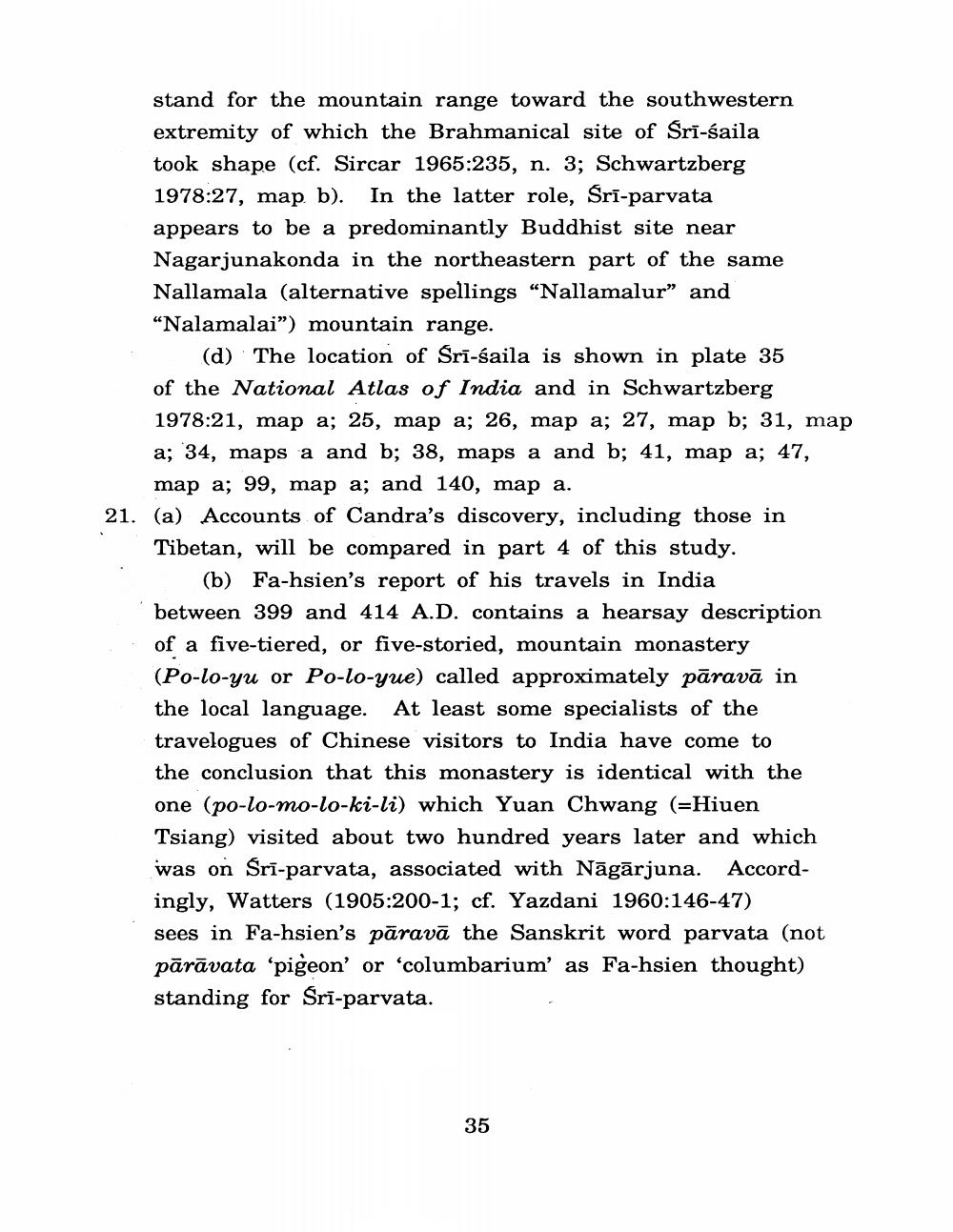________________
stand for the mountain range toward the southwestern extremity of which the Brahmanical site of Sri-saila took shape (cf. Sircar 1965:235, n. 3; Schwartzberg 1978:27, map. b). In the latter role, Srī-parvata appears to be a predominantly Buddhist site near Nagarjunakonda in the northeastern part of the same Nallamala (alternative spellings "Nallamalur” and "Nalamalai”) mountain range.
(d) The location of Sri-saila is shown in plate 35 of the National Atlas of India and in Schwartzberg 1978:21, map a; 25, map a; 26, map a; 27, map b; 31, map a; 34, maps a and b; 38, maps a and b; 41, map a; 47,
map a; 99, map a; and 140, map a. 21. (a) Accounts of Candra's discovery, including those in Tibetan, will be compared in part 4 of this study.
(b) Fa-hsien's report of his travels in India between 399 and 414 A.D. contains a hearsay description of a five-tiered, or five-storied, mountain monastery (Po-lo-yu or Po-lo-yue) called approximately pāravā in the local language. At least some specialists of the travelogues of Chinese visitors to India have come to the conclusion that this monastery is identical with the one (po-lo-mo-lo-ki-li) which Yuan Chwang (=Hiuen Tsiang) visited about two hundred years later and which was on Srī-parvata, associated with Nāgārjuna. Accordingly, Watters (1905:200-1; cf. Yazdani 1960:146-47) sees in Fa-hsien's pāravā the Sanskrit word parvata (not pārāvata 'pigeon' or 'columbarium' as Fa-hsien thought) standing for Srī-parvata.
35




